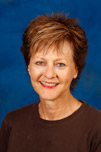
Teachers of introductory statistics are increasingly using simulation-based methods to help students learn concepts and methods of statistical inference. Two quick anecdotes:
• The theme of the 2011 U.S. Conference on Teaching Statistics was “The Next BIG Thing,” and the consensus emerging from the conference was that the BIG thing is teaching introductory statistics with simulation-based methods.
• The recently conducted International Conference on Teaching Statistics in Flagstaff (July 2014) included a large number of sessions on this topic, featuring presenters from around the world, often with standing-room-only crowds of attendees. Continue reading






